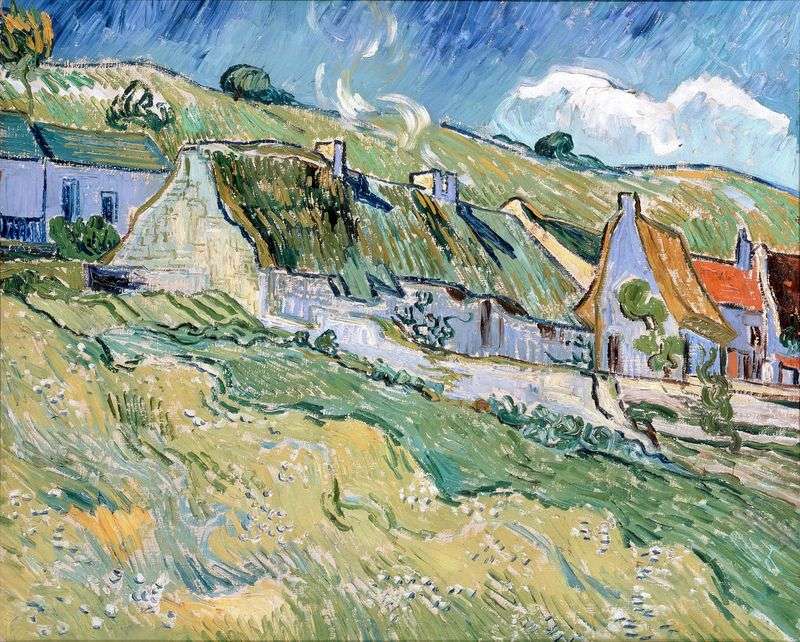
The art of Van Gogh first of all distinguishes in nature the dynamic principle and subordinates it to the reverse order of the picture. The slope of the hill with the huts clinging to it rises like a sea wave, clouds roll, the smoke twists in rings. coming out of the pipe, twisted bushes and trees.
The work of Van Gogh of previous years was characterized by an increased intensity of color; in 1890 he moved to a more tranquil gamut, built on a combination of green, blue, olive tones, but sharply increasing and, it seems, reaches the limit of the expressiveness of his picturesque manner. Energetic, pasty, as if throbbing brushstrokes swift waterfall roll down the roofs of houses, along the slope of the hill, captivating the view of the enchanted viewer.
The picture of Van Gogh requires from the beholder first of all active emotional participation, empathy. Van Gogh for a long time lived and worked in France, a strong influence on him had a painting of the French Impressionists. But the origins of his work were different – they are related to the art of the Nordic countries. Creativity Van Gogh retained this continuity and in turn had a huge impact on European art.
However, unlike France, where painting in the XX century developed mainly under the sign of Cezanne, it received the most widespread recognition in Germany, Belgium and the Scandinavian countries “Huts” created in the last year of the artist’s life. The violent color of the previous stage was replaced by a more restrained color scheme. In the picture there are no sharp contrasts, it is written in light and calm blue, yellow-green and olive tones.
The only bright spot is the red tiled roof of one of the houses and the blue color of the sky at the top of the picture, reinforced by the artist until the shrill ultramarine. But this restraint of color is combined in “Huts” with rapid dynamics of composition, a picturesque transformation of the objective world, a violent temperament of performance. Expression literally permeates the entire canvas. Clouds swirl, white smoke rises into the rings, rising from the chimney, the twigs of trees and shrubs twist. In the picture of Van Gogh there is no straight line.
The movement acquires an all-encompassing and all-consuming character. The ridge of clouds, the distant edge of the hill, the line of high roofs cascading curves intersect the plane of the picture, intensifying in its rapidity, as it approaches the front edge. And here the very soil, wavy, like a stormy sea, falls on the space of the foreground with a stream of heavy, thick, pasty-relief strokes. No painter can compare with Van Gogh in the courage with which he transforms subjective feelings into a tragedy of a cosmic scale. The painting entered the Hermitage in 1948 from the State Museum of New Western Art in Moscow.
 Wheat Field with Cornflowers by Vincent Van Gogh
Wheat Field with Cornflowers by Vincent Van Gogh The village at sunset by Vincent Van Gogh
The village at sunset by Vincent Van Gogh Houses with thatched roofs by Vincent Van Gogh
Houses with thatched roofs by Vincent Van Gogh Ukrainian landscape with huts by Vladimir Makovsky
Ukrainian landscape with huts by Vladimir Makovsky Roofs. View from the workshop by Vincent van Gogh
Roofs. View from the workshop by Vincent van Gogh Green wheat field with cypress by Vincent Van Gogh
Green wheat field with cypress by Vincent Van Gogh Peach in bloom by Vincent Van Gogh
Peach in bloom by Vincent Van Gogh Olive trees by Vincent Van Gogh
Olive trees by Vincent Van Gogh